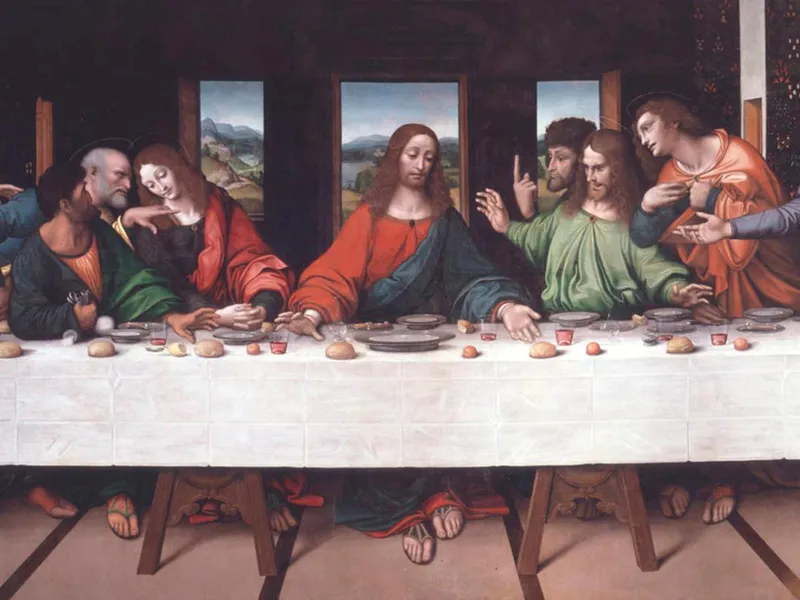
Robert Draws – The Last Supper by Leonardo da Vinci is one of the most renowned paintings in art history. Created between 1495 and 1498, it depicts the moment when Jesus Christ reveals to his disciples that one of them will betray him. This artwork is not only significant for its historical and religious implications but also for its artistic mastery. The painting’s composition, symbolism, and emotional depth have made it a subject of fascination and study for centuries.
Leonardo da Vinci painted The Last Supper on the wall of the refectory of the Convent of Santa Maria delle Grazie in Milan. Commissioned by Duke Ludovico Sforza, the artwork was intended to serve as both a spiritual and decorative piece for the dining hall. The painting measures 15 feet by 29 feet, making it an imposing and unforgettable presence in the room. The context of the piece is key to understanding its emotional and religious significance.
The scene captured is from the Gospel of John, when Jesus announces that one of the twelve disciples will betray him. The disciples’ varied reactions to this revelation are an essential component of the narrative conveyed in the artwork. Leonardo focused on portraying their emotions, making the moment come alive with intensity and drama.
“Read about: The Unspoken Beauty of Girl with a Pearl Earring by Johannes Vermeer”
The composition of The Last Supper is one of the painting’s most remarkable features. Leonardo used linear perspective to create depth, drawing the viewer’s attention to Jesus in the center. The placement of the disciples around the table creates a sense of harmony and balance. Each figure is positioned to convey a specific emotional response to Jesus’ announcement, allowing viewers to experience the unfolding drama.
Jesus is shown in the center, his hands outstretched as he shares his final meal with his disciples. The moment is frozen in time, capturing a profound moment of revelation. The disciples are grouped in threes, with each group reacting differently to the news. Their gestures, expressions, and body language reflect their personalities and roles in the narrative.
Throughout The Last Supper, Leonardo incorporated various symbols that add layers of meaning to the painting. One of the most prominent symbols is the use of light and shadow. Jesus is bathed in light, emphasizing his divinity and importance, while the disciples are placed in shadow, representing their human flaws and doubts. The lighting also highlights the moment of betrayal, creating a dramatic contrast between good and evil.
Another important symbol is the position of the hands. Jesus’ hand reaches towards a bowl, while Judas’ hand is reaching towards the same bowl, foreshadowing his betrayal. This subtle yet powerful detail enhances the tension in the scene, suggesting that Judas’ betrayal is inevitable.
The number of disciples also carries symbolic significance. There are twelve figures present, representing the twelve apostles. However, the figure of Jesus is alone in the center, symbolizing his divinity and separation from humanity. The groups of three disciples on either side further enhance the idea of the Holy Trinity and divine harmony.
“Read more: Whistler’s Mother: The Story Behind the Masterpiece”
The emotional impact of The Last Supper is another reason why it has endured as a masterpiece. Leonardo’s ability to capture human emotion is unparalleled in this painting. The disciples’ varied reactions—shock, confusion, disbelief, and sorrow—are all meticulously depicted. This emotional depth invites viewers to relate to the scene, making it more than just a historical event.
Each disciple’s reaction adds complexity to the narrative. Peter, for example, is shown with his hand raised, ready to defend Jesus, while John, the youngest disciple, leans towards Jesus with a mixture of concern and devotion. Judas, on the other hand, sits in shadow, his face partially obscured, emphasizing his guilt and betrayal. This careful attention to detail highlights the humanity of the figures, making them relatable and real.
The Last Supper has left an indelible mark on art history. It has been admired, studied, and interpreted for centuries. Its influence can be seen in countless other works of art, from religious paintings to modern interpretations. The painting’s depiction of the human condition, its use of perspective and symbolism, and its dramatic emotional intensity have made it a timeless piece.
Over the years, The Last Supper has also been the subject of various restorations, as the painting has suffered from deterioration. However, the essence of Leonardo’s vision remains intact, and the painting continues to captivate audiences around the world. It has inspired not only artists but also scholars, theologians, and art lovers who seek to understand its deeper meaning.
The Last Supper by Leonardo da Vinci remains one of the most iconic and revered paintings in history. Its composition, symbolism, and emotional depth have made it an enduring masterpiece. The painting invites viewers to reflect on the themes of betrayal, redemption, and divine sacrifice, offering a timeless message that resonates across cultures and generations. The legacy of The Last Supper will continue to inspire and challenge those who encounter it for years to come.